
Ecuador is becoming a popular foodie destination because of its delicious cuisine, but sometimes less attention paid to its traditional drinks. Energy-packed days of adventure will make you want to sit back, relax, and taste some of the traditional Ecuadorian drinks and desserts, which are just as varied and distinctive as the meals. Here’s a list of our personal favorites.
Canelazo
is a cocktail made with hot water, cinnamon, and naranjilla brandy. It is served as a sign of welcome in many folk dances and cultural events, and it will probably be served in most hotels that you visit in the Sierras. Canelazo is especially popular on cold nights because it’s said to heat up the body and rejuvenate the atmosphere.
Colada de Avena
is a drink prepared with water, oats, naranjilla, panela, and cinnamon. It’s very common in homes and restaurants, and often gets served with lunch. Colada de Avena is usually called “Quaker” because Quakers Oats are a main ingredient.
Colada Morada
, a traditional Ecuadorian drink made for Day of the Dead, is prepared with purple or black corn flour, fruits, spices, and herbs. Starting around a month before Day of the Dead happens on November 2nd you‘ll find that most restaurants will begin to serve it – kind of like the Pumpkin Spice Latte appears in the United States during the holiday months!
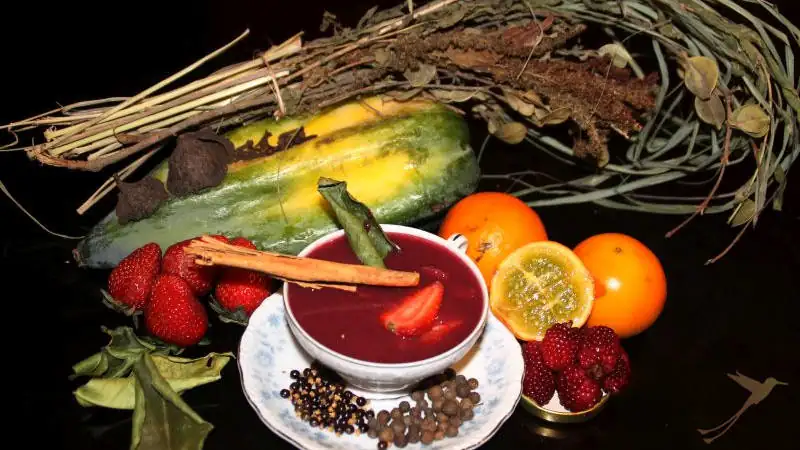
Horchata Lojana
is a tea with many healthy digestive effects. It’s prepared with flowers and herbs including lemon verbena, mint, chamomile, rose essence, and a traditional plant with healing properties called escancel. It’s popular in the southern province of Loja, and is usually served after dinner in homes and restaurants.
Rosero
is a liquid that is traditionally very thick, sometimes making it more of a snack than a drink. The mote, a type of boiled corn grain, is prepared three days beforehand and left to soak before fruits, fruit juice, rose water, and orange blossom are added. Rosero is cooked in some hotels, but is most commonly served on December 6th, the annual celebration of Quito’s founding.
Chicha de Jora
is a very traditional fermented drink of South America. Its main ingredient is malted maize, or jora. Chicha was a sacred drink of the Incan, used primarily during ceremonial events and parties like Inti Raymi, Feat of Saint Peter and Paul, marriages, baptisms, Christmas, and Carnival. It is most common in the Ecuadorian Sierra provinces and cities such as Cotacachi, Otavalo, and Cayambe.
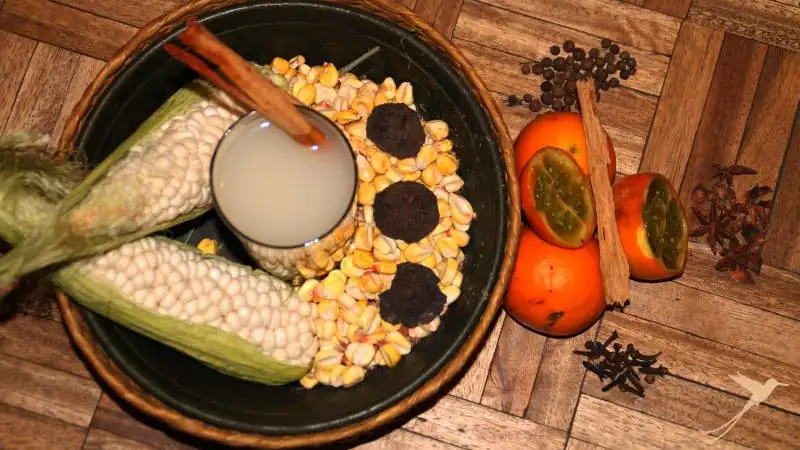
Mistela
is typically consumed as a digestive after lunch. It is infused with various fruits and herbs such as peppermint, tangerine, and peach. The more traditional version is only mixed with orange peel, coffee, cinnamon, cloves, and rum.
Aguas de Remedio
are tea infusions used to treat pain or to cleanse the body. Some of the best known herbs used are chancapiedra for the kidneys, valerian for the nervous system, chamomile for stomach pain, matico to heal infections or scarring of the skin, lemon verbena for sleep, and plantain for inflammations and wounds.
Dulce de Higo
is a dessert of fig fruit cooked with honey and served with panela and cheese. It is popular in households and also sold in country markets.
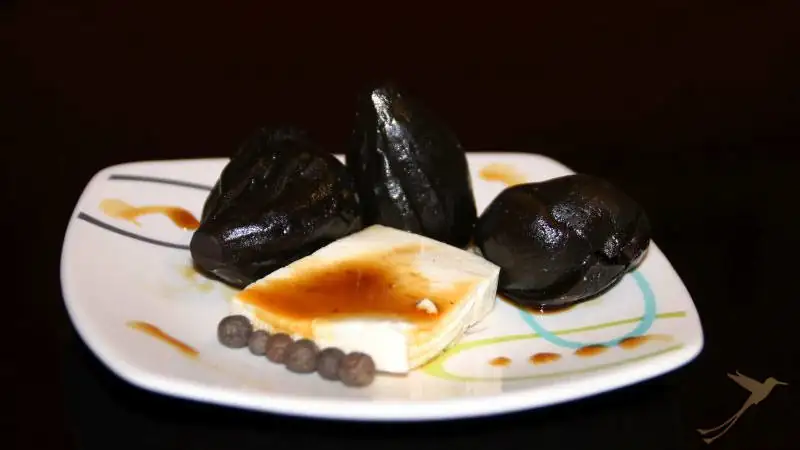
Comibebe
or come y bebe, is a mixture of various fruits such as bananas, apples, strawberries, papayas, and grapes mixed together in orange juice. It is a popular children’s drink prepared for dessert both at home and in the city markets.
Dulce de Zapallo o Calabaza
is prepared by simmering either pumpkin or squash with panela, cinnamon, cloves, and sweet pepper. It is typically served as a dessert during festivals and celebrations in Quito.
Espumilla
is one of the most traditional desserts in Ecuador. It has a creamy-foamy texture and is prepared with egg whites, guava pulp, and sugar. It is often sold at parks, especially in the cities of Ecuador.
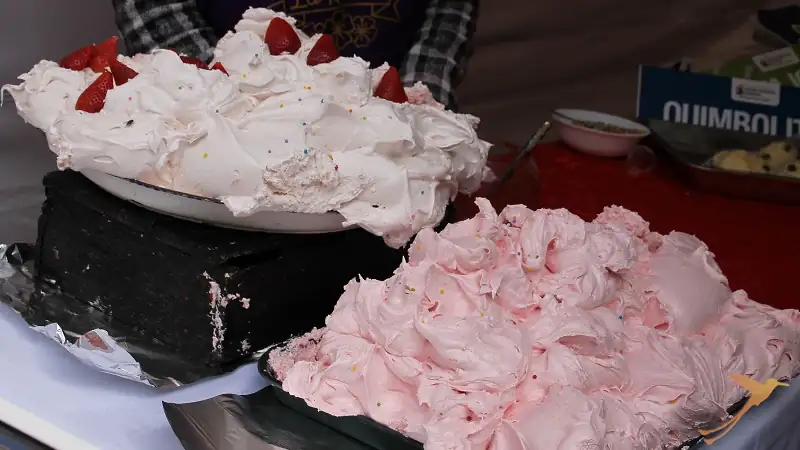
Dulce de Jucho
is a drink that mixes sweetness and acidity. Peach and capulí (a type of fruit) are cooked in syrup, panela, cinnamon, cloves, sweet pepper, and corn starch diluted in cold water. This drink is typical in indigenous households to celebrate la fiesta de florecimiento, the Pawkar Raymi ritual, or Carnival.
Helados de Paila
are one of the best of Ecuadorian delicacies. They are from the pre-Columbian era when the indigenous people would gather ice from Imbabura. A bronze pan is used to conserve the temperature, and fruit pulp, rock salt, sugar, and egg whites are mixed together with a stick until they maintain the consistency of ice cream. Helados de Paila Pomasqui offers more than 80 flavors of this traditional dessert, and it located right next to Empanadas de Morocho on Manuel Cordova Galarza in northern Quito.
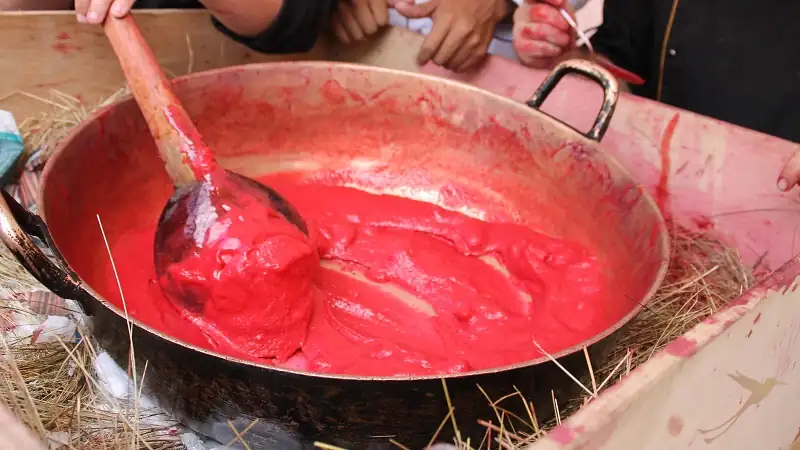
Pristaño
is thin fried wheat flour dough made with butter, eggs, vanilla, sugar, salt, baking powder, and water. The dessert also has a slight flavor of anise accompanied by panela honey. It is a very typical dessert to see during Christmastime in Ecuador.
Quesadilla
is one of the most traditional sweets in Ecuador. The main ingredient is cream cheese with sugar, egg yolks, and achira starch prepared in a brick oven. The most famous and recommended place to try this dessert is at Quesadillas de San Juan at Deifilio Torres N13-140 in front of the old military hospital which is now the Centro de Arte Contemporáneo. It is open Monday-Saturday from 9:00am-19:00pm and Sundays from 9:00am-17:00pm.
Quimbolito
is an Ecuadorian pastry that is prepared with corn flour that is wrapped in achira leaves and steamed. It has a sweet taste and is usually served with hot chocolate, coffee, or tea.

Every corner of Ecuador is filled with delicious drinks and food. They are what makes Ecuador a culinary destination and they contribute to Ecuador’s unique identity. The colors and smells of traditional Ecuadorian drinks and desserts will fill tables with happiness and make it easy to experience exquisite moments!







